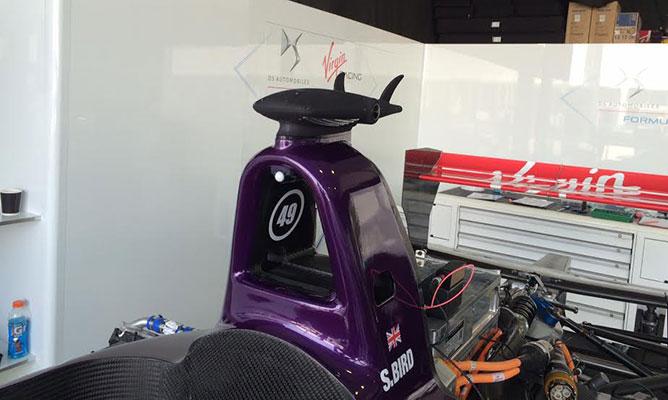Just as the best racers in the FIA Formula E Championship series are surrounded by the best teams, the groundbreaking technology that has fused innovation to the sport’s competitive spirit has been the result of teamwork, with each member dedicated to a shared, technology-first focus.
But one of the most powerful teams in the circuit doesn’t involve the drivers at all. Formula E, Qualcomm Technologies Inc. (QTI), and 360 Racing, a company that delivers 360-degree video technology across different platforms, teamed up last year to provide fans with a unique, immersive experience: an interactive 360-degree view from the driver’s perspective. Equipped with nothing more than a mobile device or computer, viewers could put themselves virtually in the driver’s seat of a car during a Formula E race.
In November, Formula E announced the extension of that collaboration for the current season. The new developments will be focused on providing interactive live streaming of the 360-degree onboard camera for four Formula E racecars during races. The system will be based on the Qualcomm Snapdragon 805 processor and focused on delivering a unique, comprehensive experience to fans of the sport.
Dmitry Kozko, President of 360 Racing, credits his teammates with major assists: Formula E for maintaining an innovative spirit that allowed for experimentation and implementation, and QTI for providing a powerful technology platform capable of meeting the rigorous demands of the intensive system.
“First, Formula E are truly champions of innovation,” said Kozko. “They’re trying to break through and change the way that people consume the sport, focusing on interactivity, on applications.”
The Challenge
When initially approached with the technical challenge for the project, Formula E introduced Kozko and team to QTI, which provided 360 Racing with the Snapdragon 800 processor (upgraded to the Snapdragon 805 for this year) to deliver on the pressing technical demands.
Kozko and QTI’s challenge came down to a few core components. First was the issue of power consumption. The system needed to use very little power—last year’s version of the camera was plugged into the car.
“As you’d imagine, races frequently come down to the last 2 to 3 percent of battery power—if there was a close loss, they would have blamed the camera. We didn’t want that, and certainly the drivers didn’t either,” said Kozko. The low power consumption enabled by the Snapdragon processor allowed the camera to use the car’s battery without having a material effect on it.
Even with this year’s version, which features an independent battery system within the camera itself, low power consumption is still of paramount importance. “Think about how quickly your phone would shut down if you had both cameras running at the same time, and you had a constant flow of data outbound from the device,” Kozko noted. “Same concept with our device—just with many, many more cameras.”
Next, the camera needed to be able to operate in racing conditions. “We wanted a high megapixel count in each sensor, and we needed a good frame rate; it’s more important than resolution to us, because the cars move very, very fast, and we didn’t want to have pieces of the race ‘missing’ for the viewers,” said Kozko. With the Snapdragon 805, Kozko’s team was able to achieve both: stunning high-quality images stitched together at an uncompromisingly fast frame rate. The processor is so powerful, Kozko said, that the cameras aren’t even pushing it to its technical limit: right now, they’re using the processor at only 50 percent capacity, leaving plenty of room for further development and experimentation.
Finally, the camera needed to seamlessly integrate with networking capabilities—by either directly transmitting the images to a centralized server, or sending them to an on board modem and then to a server for viewers to access. With the integrated SoC design in the Snapdragon 805, the video captured from the camera will be directly sent to the server for viewers to experience, without sacrificing any of the computing capacity required to run the cameras at the intensive frame rate required.
The Experience
And what’s the final product like? For the viewer, it’s as simple as it is intuitive. They download the FIA Formula E Championship app, which is available on both iOS andAndroid. Next, viewers select the “360” section of the app, which, if there’s a live race occurring, brings them to an overhead view of a map with real-time tracking of the available cars that can be accessed. They choose which car they’d like to follow, and the images being recorded live are immediately pushed to their device. Using manual controls or the gyroscopic motion of their devices, they can view in any direction on demand.
For Kozko, the experience delivered to the viewers is more than just a novelty—it’s a revolutionary new way to understand the sport, giving an entirely new dimension of engagement with it. “It’s really unparalleled to anything that exists out there. You can look in any direction and understand why the driver does what he does rather than just watch him—if there’s a car tailing close to the right rear tire going into a turn, you can see, yourself, why drivers make the decisions they do,” he says. “It’s made a new way for you to be a fan.”







